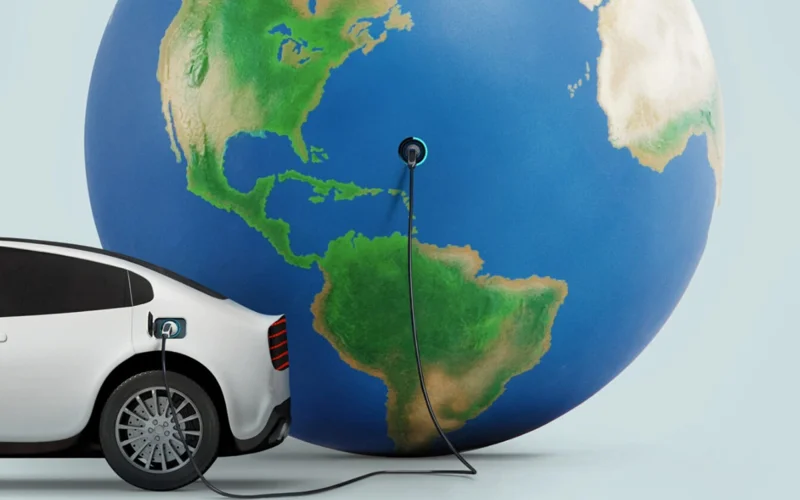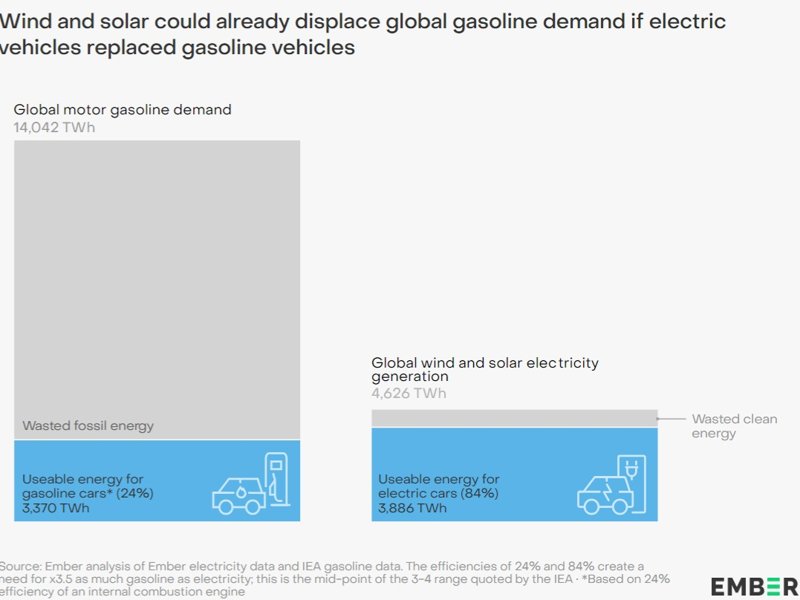How renewables could power every car on Earth
The international think tank Ember has published a new analysis highlighting the role of solar and wind power in strengthening national energy independence. The report presents three key insights that show how the shift to renewables can not only reduce reliance on fossil fuel imports, but also provide long-term economic stability, Kazinform News Agency correspondent reports.

Most of the world's population depends on fossil fuel imports
According to Ember’s estimates based on 2022 data from the International Energy Agency (IEA), 74% of the global population lives in countries that are net importers of fossil fuels. These include Japan, which meets 87% of its energy demand through imports, South Korea (81%), Turkey (69%), and Germany (67%). By contrast, China has managed to keep its energy import dependency at just 21%, thanks to significant domestic energy production—particularly from renewables—and large-scale electrification of its economy.
The import cost of a solar panel ‘pays back’ in just one year
A $100 million investment in solar panels can generate as much electricity in a year as burning imported gas costing the same amount. Unlike fossil fuels, which require ongoing spending, solar panels are a one-time expense that can offset gas import costs within a year and save billions over their 30-year lifespan.
Beyond the cost of the panels themselves, installing solar panels involves additional expenses—such as labor, land, and financing—which International Renewable Energy Agency estimated at about $0.50 per watt in 2023. To reduce future reliance on imports, many countries are investing in domestic battery manufacturing.
The world is already producing enough solar and wind
In 2024, global wind and solar power generation reached 4,626 terawatt-hours (TWh). At the same time, global demand for motor gasoline amounted to 27.25 million barrels per day—equivalent to 14,042 TWh of energy. However, internal combustion engines are highly inefficient, converting only about 24% of that energy into useful work, which means just 3,370 TWh were actually used.
Electric vehicles, by contrast, are around 84% efficient, making much better use of electricity. If all of the wind and solar power generated in 2024 had been used to power electric vehicles, it would have delivered approximately 3,886 TWh of usable energy—enough to fully replace gasoline in the global vehicle fleet.

The share of renewables in global electricity generation reached 15% in 2024—three times higher than seven years earlier. And according to IEA projections, electricity demand from electric vehicles is expected to grow nearly tenfold by 2030.
Earlier, Kazinform News Agency reported that the UK government had approved the construction of a new offshore wind farm, Rampion 2, which will add 1.2 GW of capacity—enough to power around one million homes.

